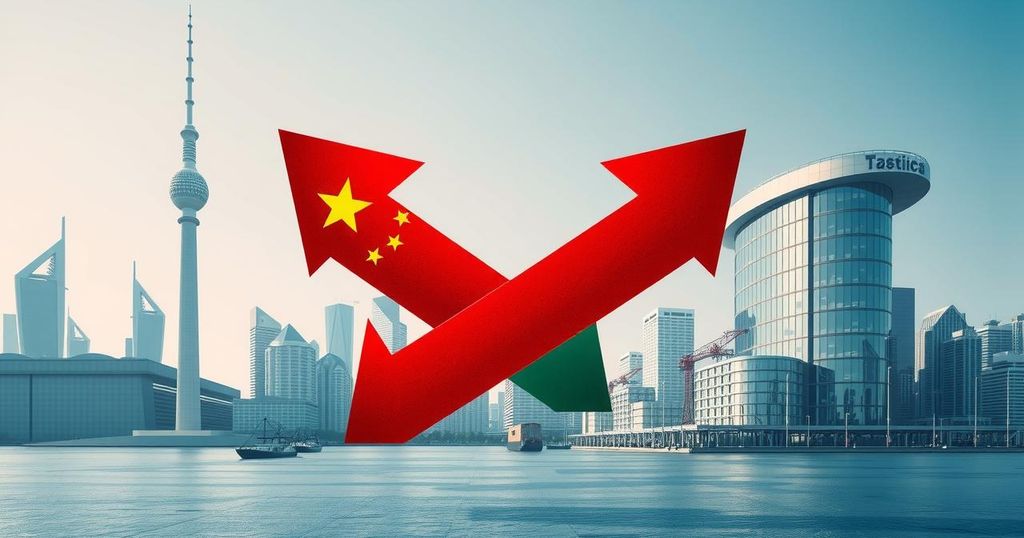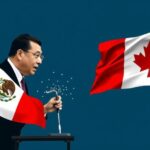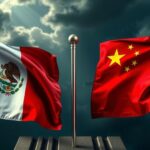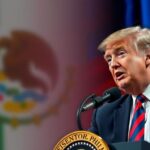Politics
ASIA, BROOKINGS INSTITUTE, CANADA, CHINA, COATES, DONALD TRUMP, DRUG TRAFFICKING, FELBAB, FELBAB - BROWN, MEDICINE, MEXICO, MIAMI UNIVERSITY, NORTH AMERICA, PANDEMIC, PHILIPPINES, PUBLIC HEALTH, RODNEY COATES, SCIENCE, TRUMP, UNITED STATES, US, US CENTERS FOR DISEASE CONTROL AND PREVENTION, US-MEXICO BORDER, VAN, VANDA FELBAB
Nia Simpson
Assessing the Impact of New Tariffs on Fentanyl Flow into the US
President Trump has enacted tariffs on Mexico, Canada, and China to combat fentanyl influx into the US, coinciding with broader aims concerning immigration. Experts express skepticism regarding the tariffs’ effectiveness, emphasizing that organized crime can adapt rapidly. Fentanyl primarily arrives via Mexican cartels using precursor chemicals imported from China, with minimal involvement from Canada. Retaliatory responses from these countries are also anticipated in light of the tariffs.
President Donald Trump has introduced new tariffs on imports from Mexico, Canada, and China, primarily targeting the flow of fentanyl into the United States. The 25% tariffs on Mexican and most Canadian goods, along with a 10% tariff on Chinese imports, aim to compel these nations to enhance their efforts in combating illegal immigration into the US. The tariffs are set to take effect on Tuesday.
Fentanyl, a synthetic opioid that is 100 times more potent than morphine, has predominantly contributed to the drug overdose crisis in the United States. As of August 2024, the CDC reported nearly 89,740 fatal overdoses from fentanyl and other drugs, marking a significant issue despite a 21.7% decrease from the previous year. Sociologist Rodney Coates described the fentanyl crisis as “a major crisis in this country.”
Most illegal fentanyl entering the US is produced by Mexican cartels utilizing precursor chemicals sourced from China. Dr. Vanda Felbab-Brown, an expert at the Brookings Institute, pointed out that fentanyl is rarely shipped from China in processed form; instead, precursor chemicals are exported to Mexico and manufactured there. The illicit drug is then smuggled into the US through various routes.
While Canada was mentioned in Trump’s rationale regarding fentanyl, experts clarify that it plays a minor role, with only about 1% of US fentanyl originating there. Dr. Felbab-Brown emphasized that Canada’s fentanyl market is largely separate from the US. Importantly, Canadian Prime Minister Justin Trudeau has acknowledged this discrepancy in recent statements.
US tariffs on China began in 2018, leading to increased scrutiny of fentanyl precursor shipments. Although China strengthened its regulations in 2019, the effectiveness of these measures diminished as US-China relations soured. In 2023, the Biden administration worked to restore anti-fentanyl cooperation with China, though experts believe the measures are insufficient in addressing the flow of precursor chemicals.
Experts are skeptical about the effectiveness of tariffs in halting illegal fentanyl imports. Organized crime is adept at adapting to law enforcement efforts, potentially redirecting trafficking through alternative countries. Furthermore, Professor Coates highlighted the critical role of immigrants in the US economy, drawing attention to the consequences of limiting their movement.
In response to the tariffs, Canada has placed tariffs on approximately $170 billion worth of US goods, while Mexico is deliberating its reaction. China is also considering retaliatory measures, planning to challenge the tariffs through the World Trade Organization. A spokesperson from China’s Foreign Ministry criticized the US, asserting that trade wars benefit no one and called for sustained cooperation against narcotics trafficking.
The new tariffs eliminate the previous duty-free exemption for low-value shipments under $800, aimed at closing a loophole that enabled the undetected importation of fentanyl and its precursors. Such low-value shipments often bypass thorough screening, posing a significant challenge in combating the drug crisis.
The article discusses the recent imposition of tariffs by President Trump aimed, in part, at curbing the influx of fentanyl into the US. Fentanyl has significantly contributed to the opioid epidemic in the country, prompting governmental actions that intertwine trade policies with drug enforcement strategies. This article explores the origins of illegal fentanyl, its impact, and the potential efficacy of the new tariffs in addressing this critical issue.
In conclusion, while President Trump’s newly imposed tariffs on Mexico, Canada, and China seek to address the ongoing fentanyl crisis, experts remain doubtful about their potential effectiveness. The complexities of the drug trade and the adaptability of criminal organizations suggest that tariffs alone are unlikely to significantly reduce the flow of fentanyl into the US. Cooperation among nations and a comprehensive strategy addressing the issue are essential to make substantial progress in combatting this epidemic.
Original Source: www.abc.net.au








Post Comment